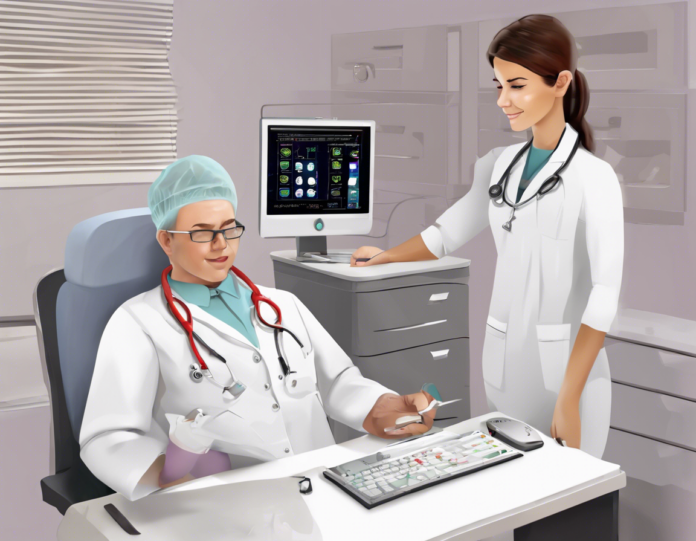As technology continues to evolve at a rapid pace, the field of healthcare is no exception. One of the most significant advancements in recent years has been the widespread adoption of Electronic Medical Records (EMRs). These digital versions of paper charts are revolutionizing the way healthcare providers manage patient information. Looking ahead to 2024, it is clear that EMRs will play an even more prominent role in healthcare delivery. Let’s explore the future of EMRs and how they are set to shape the healthcare landscape in the coming years.
The Evolution of EMRs
From Data Storage to Predictive Analytics
Traditionally, EMRs have been primarily used as electronic versions of patient charts, storing information such as medical history, medications, allergies, and lab results. While this basic function remains essential, the future of EMRs lies in their ability to harness the power of predictive analytics. By analyzing vast amounts of data, EMRs will be able to help healthcare providers predict potential health issues, optimize treatment plans, and improve patient outcomes.
Interoperability and Data Sharing
One of the key challenges in the current healthcare landscape is the lack of interoperability between different EMR systems. In 2024, we can expect to see significant strides in this area, with EMRs becoming more interconnected and able to seamlessly share data. This interoperability will not only improve the continuity of care for patients but also enable healthcare providers to access a more comprehensive view of a patient’s health history.
Patient-Centered Care
Another significant shift in the future of EMRs is the focus on patient-centered care. EMRs will increasingly empower patients to take a more active role in managing their health. Through patient portals and mobile apps, individuals will be able to access their medical records, communicate with their healthcare providers, schedule appointments, and even receive personalized health recommendations.
The Impact of AI and Machine Learning
In 2024, Artificial Intelligence (AI) and Machine Learning will play a more significant role in EMRs. These technologies have the potential to automate routine tasks, analyze complex datasets, and identify patterns that may not be apparent to human healthcare providers. By harnessing the power of AI, EMRs will be able to assist in diagnosis, treatment planning, and patient monitoring.
Clinical Decision Support
One of the most promising applications of AI in EMRs is clinical decision support. These tools can analyze patient data in real-time, provide evidence-based recommendations, and alert healthcare providers to potential risks or issues. By integrating AI-driven decision support into EMRs, healthcare professionals can make more informed decisions and deliver timely, personalized care.
Population Health Management
AI and Machine Learning will also enhance population health management through EMRs. By analyzing large datasets, identifying trends, and predicting health outcomes, healthcare providers can proactively address public health concerns, allocate resources more efficiently, and implement targeted interventions to improve the health of entire communities.
Enhancing Usability and User Experience
Intuitive Design
In the future, EMRs will undergo significant redesign to prioritize usability and user experience. By incorporating intuitive interfaces, customizable workflows, and smart documentation features, EMRs will become more user-friendly for healthcare providers. This enhanced usability will not only improve efficiency but also reduce the burden of documentation on clinicians.
Voice Recognition and Natural Language Processing
Another trend that will shape the future of EMRs is the integration of voice recognition and natural language processing. Healthcare providers will be able to dictate notes directly into the EMR, eliminating the need for manual data entry. This hands-free approach to documentation will save time, reduce errors, and allow clinicians to focus more on patient care.
FAQs
1. What are the benefits of using EMRs in healthcare?
EMRs offer numerous benefits, including improved accuracy, enhanced patient safety, increased efficiency, better communication between healthcare providers, and streamlined workflows.
2. How secure are EMRs and patient data?
EMRs employ robust security measures to protect patient data, including encryption, access controls, audit trails, and regular security audits to ensure compliance with healthcare regulations.
3. How will EMRs improve patient outcomes in the future?
By leveraging predictive analytics, AI-driven decision support, and patient engagement tools, EMRs will help healthcare providers personalize treatment plans, prevent adverse events, and promote wellness, ultimately leading to improved patient outcomes.
4. Will interoperability improve between different EMR systems in the future?
Yes, in 2024 we can expect significant improvements in interoperability, allowing different EMR systems to seamlessly share data and provide healthcare providers with a more comprehensive view of a patient’s health history.
5. How can patients benefit from the use of EMRs?
Patients can benefit from EMRs by gaining easy access to their medical records, communicating with their healthcare providers, receiving personalized health recommendations, and playing a more active role in managing their health.
In conclusion, the future of EMRs in 2024 holds great promise for transforming healthcare delivery through predictive analytics, AI-driven insights, enhanced usability, and patient-centered care. By embracing these advancements, healthcare providers can improve patient outcomes, enhance efficiency, and ultimately, deliver better quality care to individuals and communities.












